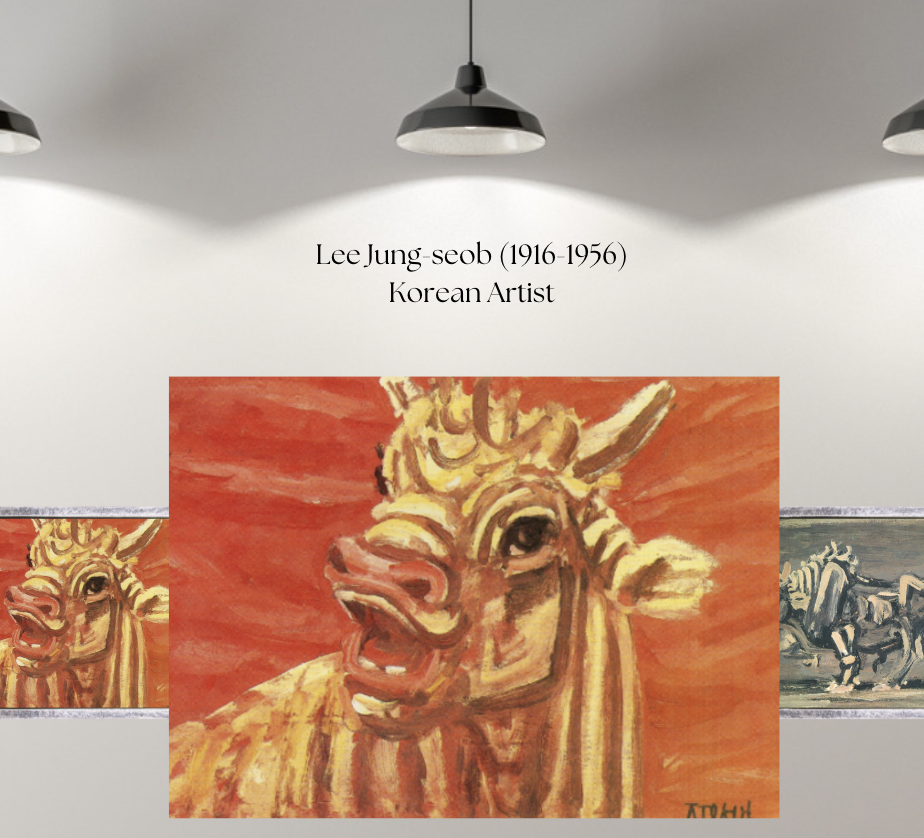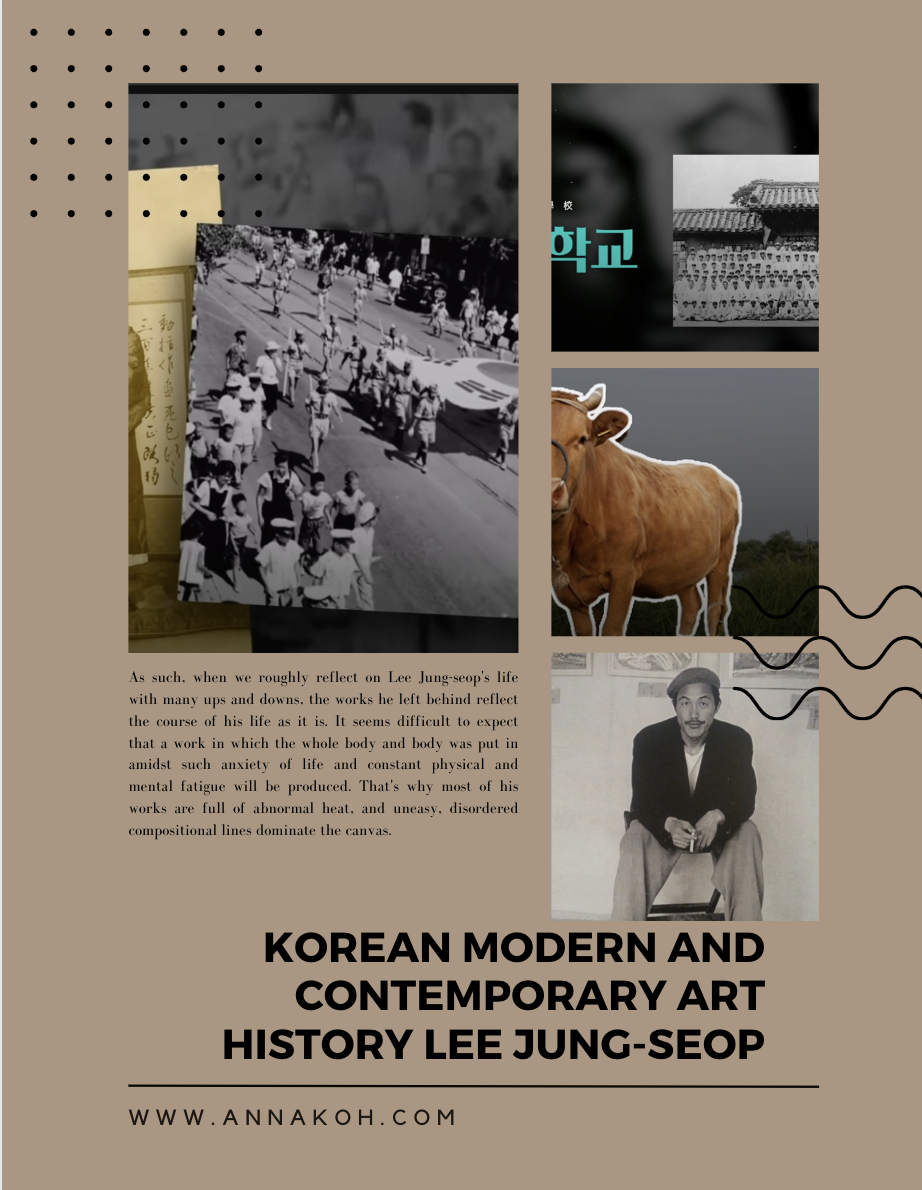1. Open questions:Q 1: What might the relationship between Bull and Korean to these two characters be? Q2: What is one thing that draws your attention through the picture? Q3: How do you feel about this picture? * Under the guidance of a facilitator, visitors closely observe the artwork, understand what they have seen based on past knowledge and experience, share impressions and insights, and create meaning for the artwork together. Gallery Conversation thus invites participants to slow down, take a close look, and explore the work with fresh eyes. (Art Museum Education, Chapter 1: Three Kinds of Dialogue About Art) Q4: What lessons do the paintings of artist Lee Jung-seop teach you through the summary of Korean modern and contemporary art history you have learned ? Q5: What is the difference between the attitude of appreciation of paintings before and after learning Lee Jung-seop's obstacles and difficulties in life? Q6: When you compare Lee Jung-seop's bull and white cow, what difference do you feel? Q7: What image (symbol) does the bull have in your country (culture)? What is the same or different from Lee Jung-seop's bull? Q8: If you want to represent your country (culture/identity), what animal can you think of? Q9: Describe an experience in which you overcame this through a painting or a symbol in a painting during a difficult time. Q10: What might you learn about Lee Jung-seop's technique of expressing objects from watching Lee Jung-seop's cow? * Students will learn a brief history of Korean modern and contemporary art after viewing the work of artist Lee Jung-seop, Bull and White Cow. After this, they will match the meaning of modern and contemporary history and Lee Jung-seop's works with open questions. Next: 2. Research.
0 Comments
Leave a Reply. |
Myungja Anna KohArtist Categories
All
Archives
July 2024
|
Proudly powered by Weebly



 RSS Feed
RSS Feed